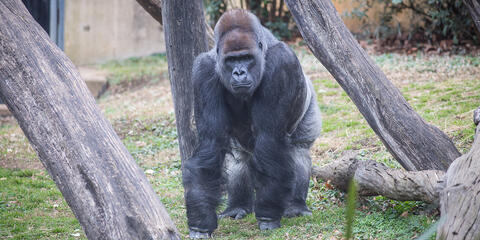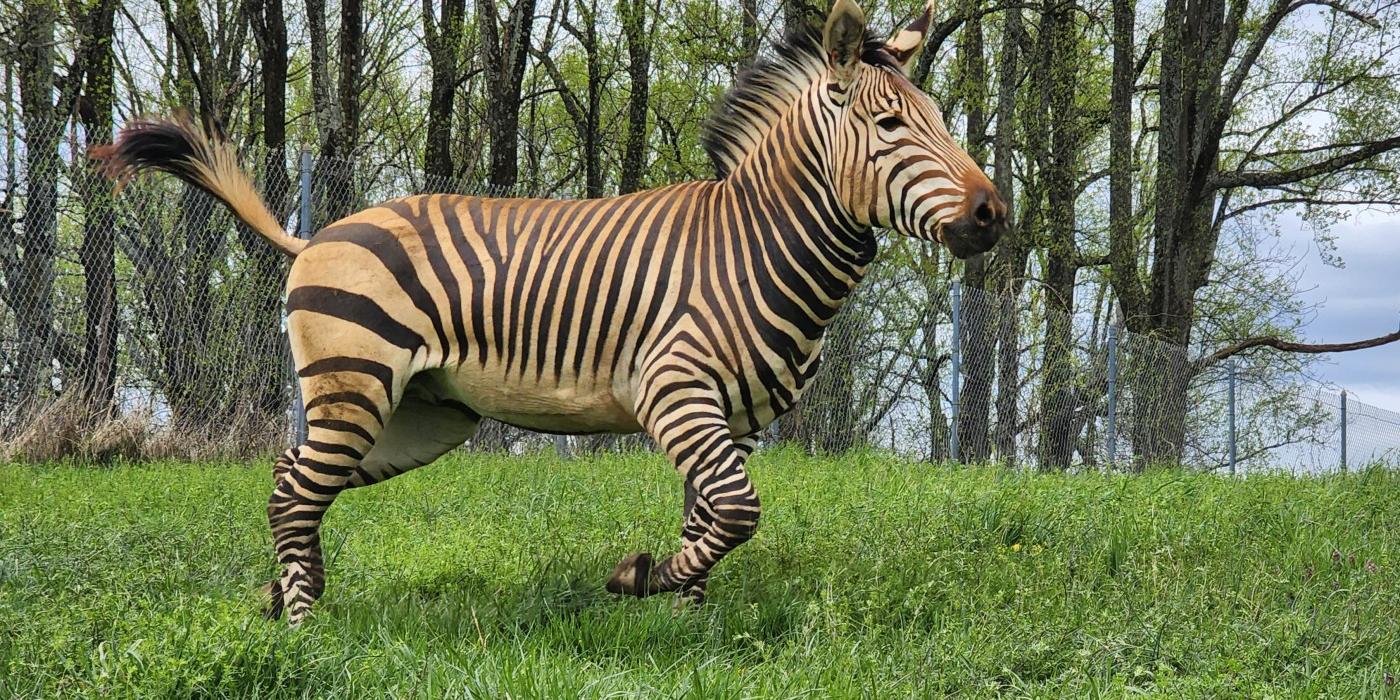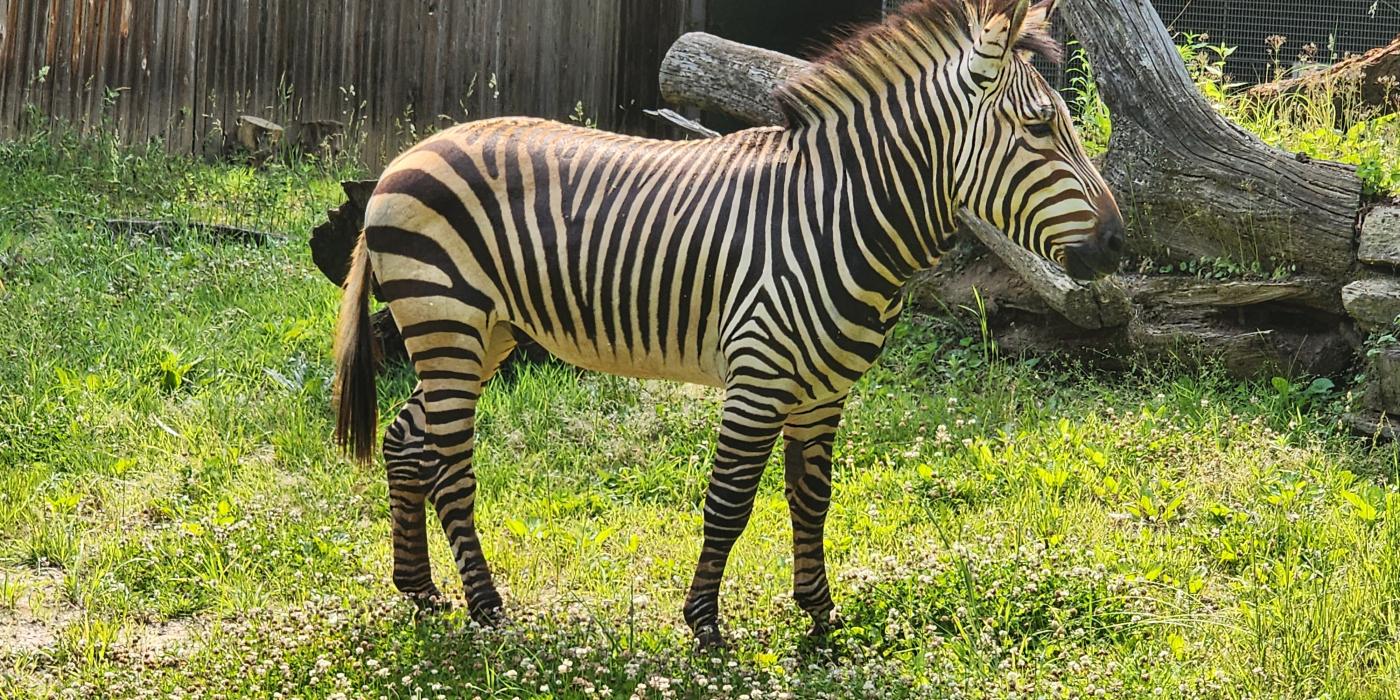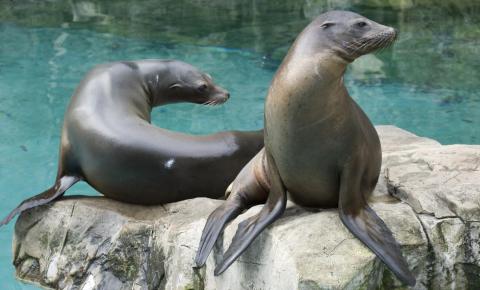Physical Description
Zebras are known for their resemblance to horses, but with bold, black-and-white stripes all over their bodies. They have long faces and necks, barrel-shaped chests, strong legs and pointed hooves. No two zebras have the same stripe pattern.
Unlike other zebras, Hartmann's mountain zebras have vertical stripes on their neck and torso and horizontal stripes on their backside. They also have white, non-striped bellies. Their coats can sometimes appear reddish; this is due to their habit of rolling around in dirt and mud. Hartmann's mountain zebras are smaller than plains or Grévy's zebras.
Size
Hartmann’s zebras are one of the smaller members of the zebra family, standing at 4 to 5 feet (1.2-1.5 meters) tall, with an average body length between 6 to 8 ½ feet (2-2.6 meters). Adults weigh between 450-820 pounds (204-372 kilograms).
Males and females are about the same size, and there are few physical differences between them.
Native Habitat
Mountain zebras are adapted to live in dry, rocky areas and semi-wooded grasslands. Their range is limited to a few mountainous regions in southwestern Angola and the coastal mountain ranges of Namibia.
Lifespan
In the wild, Hartmann’s zebras usually live between 10-20 years. In human care, they can live up to 30 years.
Communication
Like many members of the horse family, Hartmann’s mountain zebras mostly rely on body language to communicate. They are also capable of making noises to express their contentment, raise an alarm or challenge others.
Food/Eating Habits
Hartmann’s mountain zebras are herbivores. In the wild, they graze and browse for grasses, shrubs and leaves to eat. At the Smithsonian’s National Zoo and Conservation Biology Institute, they eat a diet of hay, grass, pellets and browse (leafy branches).
Hartmann’s mountain zebras are known to take dust baths, rolling around vigorously in dust and mud, which clings to their fur. This helps keep their skin cool and protected from insects. After the zebras leave the area, the shallow depressions left in the ground become mini-habitat areas for native vegetation, effectively making the zebras ecosystem engineers.
Sleep Habits
Hartmann’s zebras are crepuscular, meaning they are most active around dawn and dusk. They are thought to have excellent night vision.
Social Structure
As sociable animals, plains zebras tend to live in herds of many individuals. However, Hartmann’s mountain zebras naturally form smaller herds, typically of one male and two to five females. In the wild, young males often live by themselves for a few years.
Zebra herds travel together, rotating between habitat areas in search of grasses and water. They also travel between higher elevation areas in the warmer months and lowland savannah and scrublands in the cooler months.
Reproduction and Development
Hartmann’s mountain zebras are polygynous, forming breeding herds with one stallion and two to five mares, along with their foals. Mountain zebras are also known to form bachelor herds, in which several young male zebras will travel together until they form their own breeding herd. Females typically reach sexual maturity around 2 to 3 years of age, while males become sexually mature around age 4 or 5.
Mares have a gestation period of about 12 months, after which they give birth to a single foal. After they are first born, foals weigh about 55 pounds, and are capable of standing and walking in just a few hours.
Foals rely on their mothers for protection. They are weaned from their mother’s milk after about 10 months, although they will begin to eat grasses after about 2-3 months. After about fourteen months, foals are usually expelled from the herds; males will typically join a bachelor group, while females will find a bachelor male and pair up to form a new herd.
Conservation Efforts
With less than 25,000 individuals left in the wild, the biggest threat to this species’ survival is habitat loss and fragmentation as the result of livestock production and agriculture. Many of their native mountain ranges are now protected areas, but conflict with nearby humans occurs when they wander outside of their protected range. This species is also vulnerable to illegal hunting and trapping for their meat and skins. In addition, the effects of climate change have brought more intense droughts to their native habitats, limiting their natural supply of water, food and other resources.
Help this Species
Meet the Animals
The Zoo's male zebra, Yipes, was born at the Smithsonian Conservation Biology Institute on July 2, 2020.
Animal News
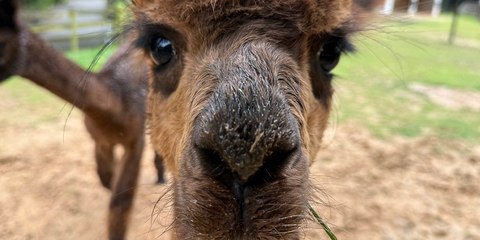
Zoo Welcomes Alpacas ‘Rainstorm’ and ‘Coffee Cup’
